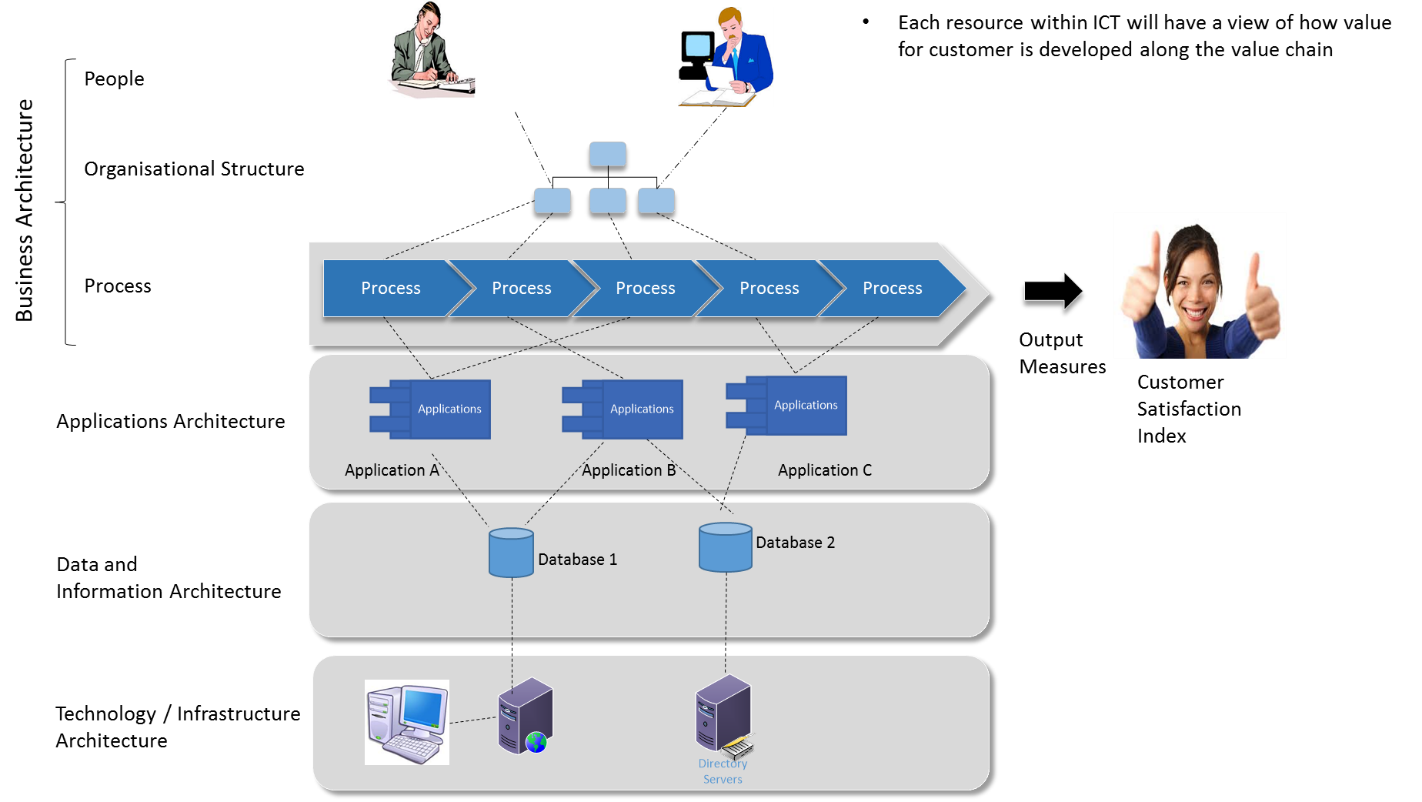Introduction
The purpose of these guidelines is to help public entities and GoR’s private partners to have a common understanding of EA practice and to guide the systematic mapping of the institution’s IT landscape (Blueprint) in clear steps namely: the ASIS situation, the To-Be situation, the Gap analysis and the Roadmap.
In order to bring alignment between business requirements and IT capabilities, the blueprints are implemented through five (5) domains namely Business, Information, Data, Application and Technology/Infrastructure Architectures. These are commonly referred to as the BIDAT stack.
Depicted below are the domains that make up the BIDAT stack.
Business Architecture
This domain documents the business strategy, governance, business rules, goals, structure, processes and services. Within this initiative, the business domain will concern itself with the documentation of business services that IT supports.
Information Architecture
This domain is concerned with the transfer of information between different business units using IT solutions
Data Architecture
This domain looks at how data sources are managed within an environment. It concerns itself with the structuring of databases, defines the standards and models for data collection, storage, use, and management. All attributes for databases are stored within the Information Resource Catalogue (IRC). It documents the physical and conceptual data models, logical and physical data assets and data management resources. In some cases, due to the close association between the two domains,
The information and data architecture are combined and collectively referred to as information system architecture.
Application Architecture
This domain documents the systems to be deployed, their interactions, and their relationships to the core business processes of the organization. The key deliverables for this domain include the application models and an Application Portfolio i.e. a catalogue of all applications within a given environment.
Technology Architecture
This documents the hardware and software capabilities that are required to support the deployment of business, data and application services. This includes the documentation of the Enterprise Service Bus, IT Infrastructure, middleware, networks and communications channels.


No Comments